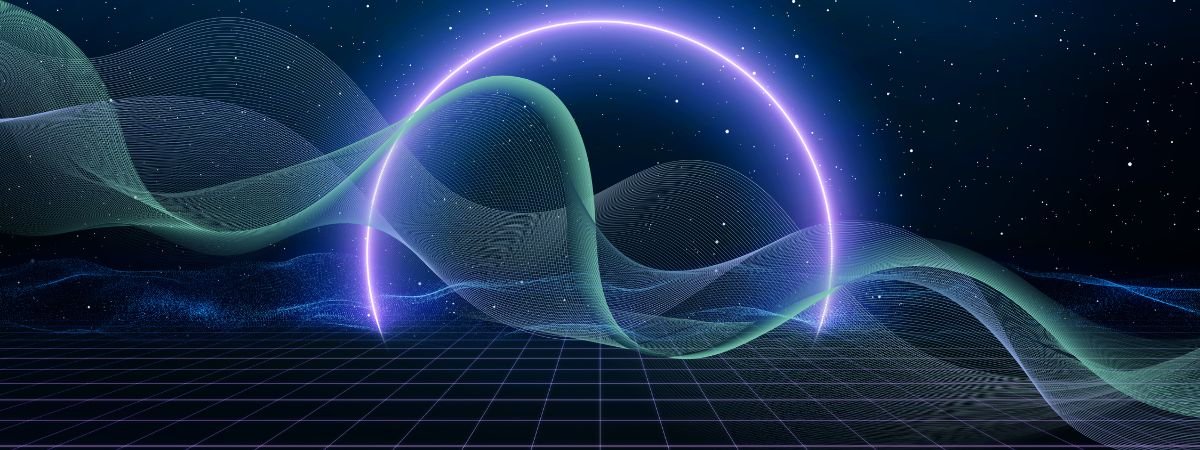
Why do we exist? What is the nature of our reality? These are questions most of us are bound to explore as a way to explain the meaning of life and existence. Like many phenomena today, we do not have all of the answers. But we have frameworks and thought experiments to draw from which allow us to understand how we relate to our base reality.
Scientific Thoughts
Observable science tends to gravitate towards concepts like outer space to explain our existence and try to understand the fabric of reality. In space, we use telescopes that capture the electromagnetic spectrum in ways our eyes cannot observe. The photos we see from telescopes like Hubbard are colorized for our greater understanding. There are also concepts like dark energy which is an unobservable unit in the universe. We cannot perceive this energy, but we know it is a force driving from beyond.
One persistent idea is the Big Bang theory. This theory explains our universe’s origin: one point in space with an incredible density of energy exploded to create space-time. And from those first moments, space expanded rapidly. The only “element” that existed was pure energy. That energy represents the building blocks of everything in our entire universe, meaning everything we are made of and interact with existed in this pocket of energy once.
As far as energy is concerned, we have found the Laws of Thermodynamics to be true and consistent: matter/energy cannot be created or destroyed. However, matter and energy can be transformed through construction and destruction.
Looking Inward: Being Human
We live as humans, or in other words, we are animals. We are creatures with biological processes. That may sound incredibly obvious, but we often tune out what accentuates our experience of being human: our senses.
Most of us are familiar with the five senses: Sight, Hearing, Smell, Taste, and Touch. I sometimes refer to them as “reality collecting” tools.
Each of these senses require an input to our brains as humans. Sight connects to our eyes. Hearing connects to our ears. Smell connects to our nose. Taste connects to our tongue. And Touch connects with our skin and tactile body parts.
We also have many other senses relative to our reality, including a sense of space and a sense of time. Each of these senses are generally mapped to our brain/mind through the body.
Like any measuring tool, our senses are merely filters for our existence in the world/universe. They do a great job of allowing us to be curious and explore the universe around us. And they allow us to build collective, shared realities as we communicate our experiences together. That is what makes us uniquely human. But that is also what keeps us from exploring the unthinkable: what are we unable to observe around us?
It can even be hard to verify that our senses match up with each other. In VSauce’s YouTube video, he explains how we are unable to know whether someone’s perception of the color red is the same as someone else’s. Even with similar “reality collecting” tools, we may have drastic experiences amongst ourselves as well.
But think of the number of animals on planet earth alone who have senses differently developed than ours. Some animals, such as the mantis shrimp, see much more of the electromagnetic spectrum than we do as humans, portraying more nuance of color perception. Dogs can identify much more information by sniffing with their noses than we can. The list goes on and there is likely much to explore on this front.
In our current experience of life, we are the products of many years of evolution from those who came before us. And the same applies to all species alive today. While these evolutions are often marvelous and help to explain our origins, they also highlight our constraints in the universe.
To understand more about an objective reality, we have to all agree to the idea that we need to account for our limitations on this journey which can be challenging. How can you observe what you are currently unable to observe? We are biased in accepting our observed reality as the best representation of objective reality.
As the apex species of earth in the postmodern era, it is our duty to challenge our understanding of reality by understanding our limits. That includes you and I, dear reader.
Suffice to say, my point in declaring us human is to say: we do not perceive all of the “reality” around us. Moreover, reality is a relative perception. It depends on how you’ve processed using your “reality collecting” tools.
And for some, delving into this realm of the hypothetical unknown is not useful to their understanding of reality as it pertains to their life. But for me, these observations begin to paint a picture.
Spiritual Connections
Many modern day and all human religions aim to explain some part of existence and our purpose in it. I separate the ideas of the religions themselves, the religious doctrines, from religious institutions which have an agenda to grow their religious followings.
Many religions offer the idea that one or many Gods are higher dimensional beings originating from earth or space that have domain over us and/or created us, often with a purpose of some kind. But over thousands of years, our species have continually disagreed about what the true nature of reality is from a religious perspective. Even today, many people in the world are choosing to forgo religious institutions altogether in their lives.
But religion and spirituality are not necessarily one in the same. To explore your spirit or soul, may mean exploring your inner world. You may express yourself in unexplainable ways or connect to serendipitous ideas.
The concept and dubious nature of the paranormal is often another wing of spiritual connections people make to understand our reality. While many concepts–like ghosts, aliens, or supernatural creatures–are disputed by observable science at this point, people continue to connect with energy or beings that are unobservable.
Even the simple idea of intuition, one of our “reality collecting” tools, is a dubious one. Sometimes we just have a feeling something is going to happen. Or we think of a person and then they give us a text. This sense is not always full proof, like our other senses, but possibly demonstrates the idea that we are all somehow connected.
And these ideas help us to understand the concept: We are all one. This concept is a popular one in new age spirituality, but how spiritual people understand this concept may differ greatly.
How can it be that “we are all one” while living a part in our own bodies? I do not agree with the idea that everyone is you pushed out or the idea of solipsism, meaning only the conscious observer is “alive.”
Rather, I agree with the idea that we are all inherently connected. From the same stardust in our solar system and from the same energy before atoms were created in our universe. Every time our energy or atoms interact, I believe there is an unseen energetic connection, especially as relational creatures and social animals.
To agree that we are the fabrics of the universe in a different form means to agree that we have inherent connections to the universe. The implications of this idea opens up many possibilities outside of our current perceptions.
Discussing Dimensions: 1D, 2D, 3D, 4D
Many popular sci-fi movies and television refers to “dimensions” in a variety of ways, including multiverses, different timelines, etc. But it is important to differentiate what the word “dimension” means in the sense of our existence and relationship to reality.
These mathematical dimensions encompass how we relate and move in our universe and provides certain kinds of restraints allows for our existence. What are the main dimensions?
The 1st Dimension often represents a singular point in space. Think of an X and Y axis, where only one point is plotted. Forever.
The 2nd Dimension represents an ability to have movement in two directions, the X and Y axis. Up and down and side to side.
The 3rd Dimension represents an ability to move and shape in three directions, the X, Y, and Z axis. Up and down, side to side, and front and back.
The 4th Dimension represents an ability to move and shape in four directions, the X, Y, Z, and Z0 axises. Up and down, side to side, front to back, and…what else?
Many people often explain this dimension as time, but there is controversy with that label. I like to think of the 4th dimension as representing the shape of two points of space-time. We are stuck in a linear experience with time, only able to go forward in our current understanding of reality. Even so, there is no such thing as objective time in the universe.
Where you are in the universe represents a point in space-time, and how fast you travel can dictate having a different experience of space-time compared to other observers. As illustrated in the movie Interstellar, travelling astronauts at light speed away from earth would not age. Meanwhile, on earth the people would age much faster relative to the astronauts. This leads to the outcome where the main character returns to find his daughter being biologically older than him, in her 80s to his 40s. How can this be?
We as humans seem to be 3D creatures living in a 4D universe that perceives in 2D (with lighting and shadows tricking us into seeing 3D).
This is where our current understanding is limited to theoretical understanding. We can plot out what objects in dimensions higher than 3D would be, such as a 4D cube, called a tesseract. One possible thought of interacting in 4D comes from Interstellar, where the main character is able to traverse inside a tesseract and interact with different points of time in the past, present, and future.
In our current understanding of reality, we are not able to know what the constraints of our dimensions are. We currently believe it is not possible to “go back in time,” but the universe itself seems to be a quantum universe.
The idea of Schrodinger’s Cat and the Double-Slit Experiment with observed vs. not observed phenomena demonstrate that conscious awareness can change the outcome of particles. And may even dictate what reality currently is in any given moment. Quantum reality is an idea that any possibility exists, even as we are rooted to our current observations in reality.
A non-quantum universe would be deterministic in comparison, with some element possibly providing a predictable outcome. Not every possibility would exist, but a pre-defined or computed reality only.
In Conclusion For Now
We still are not able to answer whether there is a creator or many with the creation of our universe.
The idea of higher dimensional beings would represent beings that live with more directions of existence than we know of. And they would be able to see inside our bodies, minds, and souls without our knowledge. Perhaps, they are not constrained to the limits of space-time like we are.
But for the time being, we are constrained to this experience. With no direct answers, it is our job to answer why we personally exist. We make meaning of our own lives, possibly out of an absurdist universe made of an infinite amount of combinations. Possibly, we are living one of an infinite possible lives in all universes that we will continue to live again and again (called The Egg Theory).
For us to make breakthroughs to understand the unknown reality around us, we may allow ourselves to connect to our world in new ways. To deeply challenge commonly held beliefs. And to know, we are still human, the same as all points in our recent past. We are not perfect, but we are curious. And I hope you are too about reality now.




